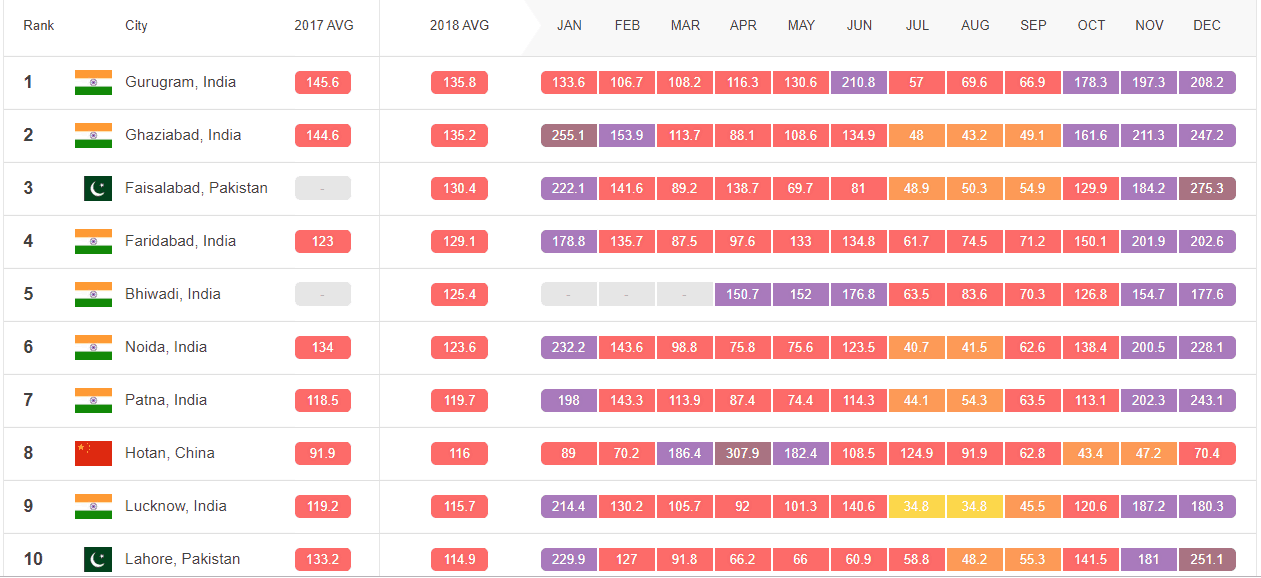AirVisual and Greenpeace have jointly published the World Air Quality Report for 2018, ranking over 3000 cities based on their pollution levels. Out of the total 64% exceeded the WHO’s annual
exposure guideline for fine particulate matter, also known as PM2.5. In the Middle-East and Africa all (100%) of the measured cities exceeded the WHO guideline. In South Asia and South East Asia this was 99% and 95% respectively, while 89% of cities in East Asia also exceeded the target.
The top 50 cities with the highest average PM2.5 levels during 2018, were from China, India, Bangladesh and Pakistan. At a country level, weighted by population, “Bangladesh is the most polluted country on average, closely followed by Pakistan and India, with Middle Eastern countries, Afghanistan and Mongolia also within the top 10”.
PM2.5 is particulate matter measuring up to 2.5 microns in size. It has the most health impact of all commonly measured air pollutants, has a range of chemical makeups and a variety of sources, such as vehicle engines, industry, wood and coal burning. Because of its small size it can penetrate deep into the respiratory system as well as the entire body.
“Air pollution steals our livelihoods and our futures,” Yeb Sano, executive director of Greenpeace Southeast Asia, said in a statement. “In addition to human lives lost, there’s an estimated global cost of 225 billion dollars in lost labour, and trillions in medical costs,” he added.
Photo credit: AirVisual

